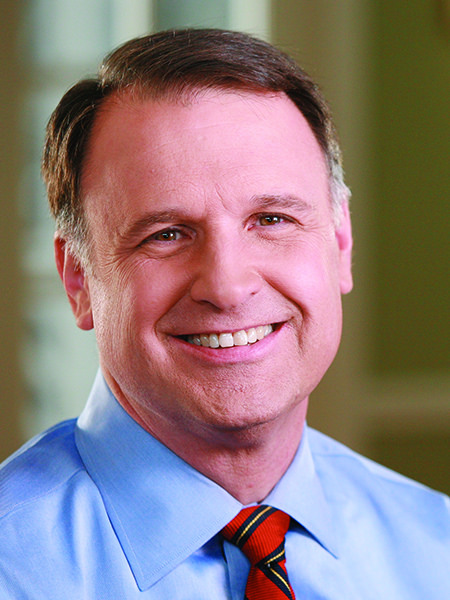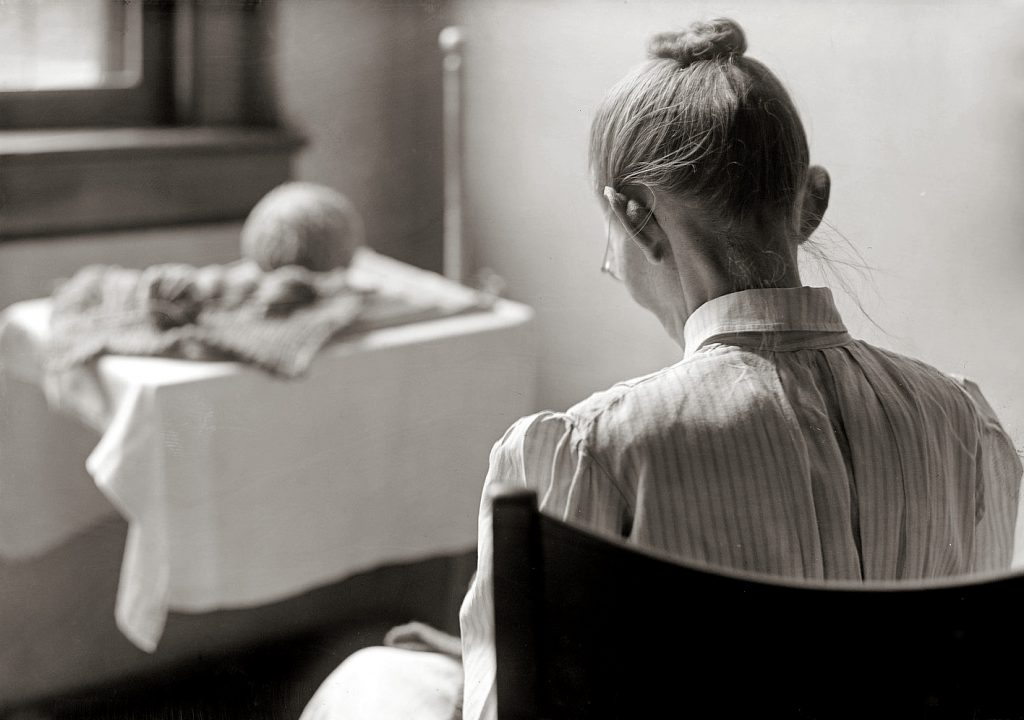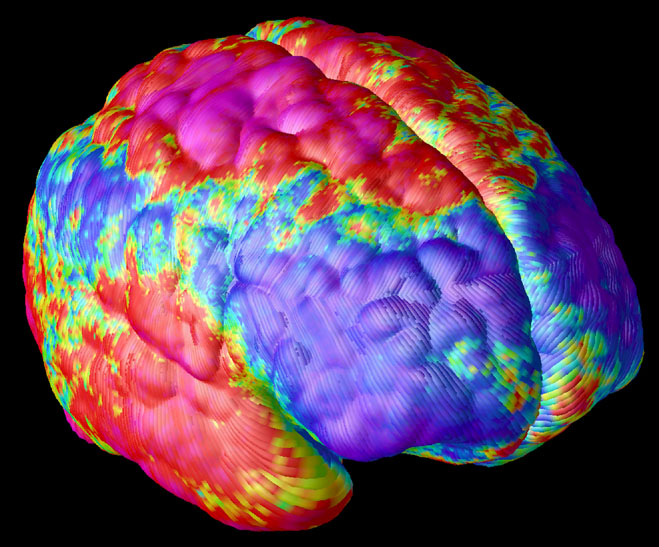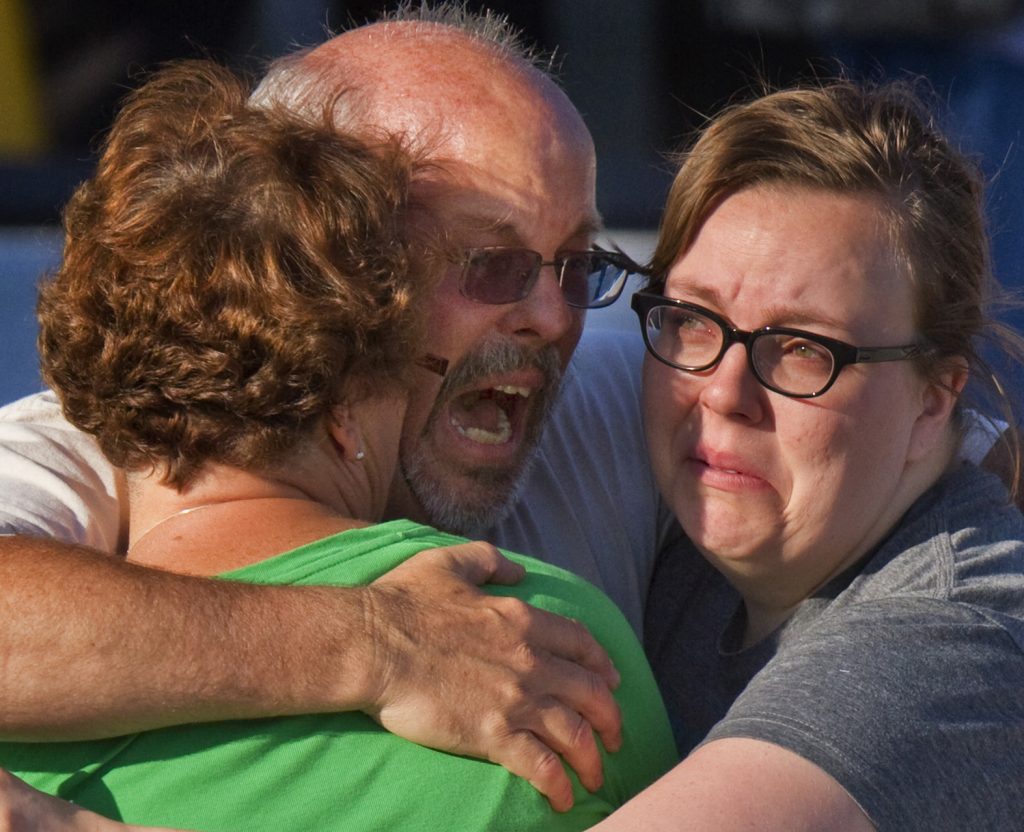Are We to Blame for the Colorado Theater Shooter?

Around midnight on July 20, 2012, James Holmes entered a movie theater in Aurora, Colorado, for a showing of the Batman movie The Dark Knight Rises and took a front-row seat. Shortly after, he left the theater through a rear door, propping it open, and returned to his car, where he donned combat gear and retrieved his weapons. Leaving his car, he called a University of Colorado mental health hotline. No one answered. Holmes pocketed the phone and proceeded to walk back into the theater, now carrying two tear gas canisters, an AR-15 rifle, a Glock pistol, and a 12-gauge pump action shotgun. Within minutes, he had killed 12 people and wounded 70 more.
At his 2015 murder trial, Holmes’ mother Arlene said she’d thought she had a “good kid.” As far as she knew, until that night, he had never hurt anyone. She had no idea that his psychiatrist thought he might be psychotic, that he’d stopped treatment, or that he’d had thoughts about killing people.
“I understand he has a serious mental illness. He didn’t ask for that. Schizophrenia chose him. He didn’t choose it,” she told the jury. “I still love my son.”
Holmes’ trajectory is unsettlingly similar to those of at least two other young men who’ve made headlines over the past few years. Aaron Alexis is now known as the “Navy Yard shooter.” But the 34-year-old veteran and Naval Reserve officer had sought help for at least a few years before he shot and killed 12 people in the U.S. Navy’s headquarters in Washington, D.C., in September 2013. Unlike Holmes, however, he had a history of violence. In 2004, he shot out the tires of another man’s car in a rage, and in 2008, he was issued a citation for disorderly conduct at a nightclub.
He also suffered from paranoia. Less than six weeks before the Navy Yard attack, he called the Rhode Island police to report a case of harassment. Three strangers were following him, he said, talking to him and sending vibrations into his body that prevented him from sleeping. He told the police he was “worried that these individuals [were] going to harm him.” He visited two Veterans Affairs’ emergency rooms complaining of insomnia. But he never received the kind of help that met his needs.
Austin “Gus” Deeds suffered a similar fate at the hands of the mental health system. In 2011, his family took action twice to get him involuntarily committed to a mental hospital. Finally, in 2013, he was evaluated at Bath Community Hospital, where he was deemed to be in need of mental health services. But there were no inpatient hospital beds available, and he was not admitted. The following morning, the 24-year-old musician and high school class valedictorian stabbed his father, Virginia state Sen. Creigh Deeds, 10 times. Then he took his own life. “It’s clear the system failed,” said his father, who miraculously survived. “It killed Gus.”
Like Holmes, Deeds had no history of violence. According to a long-time friend, Tony Walters, “He was a wonderful person who in a very tragic way got sick and struggled with this awful mental illness in the way someone else would struggle with cancer.”
Those who speculate on the sources of such violence point to everything from the influence of American notions of masculinity, to the consumption of violent video games, to the relationship between mental illness and access to guns. Some argue that people with mental illnesses are more likely to commit gun violence, but little research supports this claim. Fewer than 5 percent of the 120,000 gun-related killings in the United States from 2001 to 2010 were perpetrated by people diagnosed with mental illness, according to the National Center for Health Statistics.
The problem is not that people diagnosed with mental illnesses are necessarily more violent, although violence can be a consequence. Rather, Holmes, Alexis, and Deeds are also united by something else: The mental health providers these young men approached for care were repeatedly unable or unavailable to address their needs. Our system failed them.
Building on my earlier research, which explored the country’s troubled mental health care system and one organization’s attempts to promote recovery, my current research project investigates how young people who are hospitalized for first-episode psychosis make decisions about follow-up treatment. My team has now interviewed nearly 40 young people (ages 18–30) after their initial hospitalizations—and their key supporters, everyone from parents to peers—to ask what daily challenges they face and what factors influence whether or not they seek further treatment. [1] [1] This research was funded by a National Institute of Mental Health research grant. The author thanks the families and youth who have shared their stories with her and gratefully acknowledges the efforts of her research team, which has included Anubha Sood, Katherine Fox, Brenna Raney, River Ribas, and Gillian Wright.
In the last decade, increasing evidence has shown that psychosis appears to have something in common with cancer. It seems to progress in stages, just as some cancers do. If recovery-oriented care is offered and accepted in the first three to six months after someone’s initial hospitalization for early psychosis, it may set the groundwork for mental health recovery and a return to a meaningful life.
Psychotic disorders like schizophrenia or schizoaffective disorder cause people to experience distorted realities, usually in the form of hallucinations and delusions. They are also accompanied by more discrete symptoms such as disorganized thinking, low motivation, poor eye contact, or neurocognitive issues (such as poor working memory). Initial psychosis often strikes when someone is between 15 and 30 years old, which is a particularly stressful time to develop a serious mental illness. A person moving into adulthood is already negotiating significant life changes, such as leaving home for the first time, setting up household routines, developing new relationships (romantic and otherwise), and beginning a career.
Because their lives are steeped in upheaval and change, affected young people need help getting back to school and work. And they oftentimes require support to repair the relationship tensions that can arise during a psychotic break. When these types of needs are met, young people tend to do much better.
But in most cases, the mental health system fails to address these fundamental needs and instead acts in ways that perpetuate the problem. For example, recent results from early intervention programs suggest low-dose medications can help youth during the early months surrounding an initial psychotic break. But this practice is not yet widely adopted. Several academic psychiatrists have told me that their colleagues often prescribe strong pharmaceuticals at higher doses, which can leave those who take them feeling sluggish and alien to themselves. Many clients also report serious weight gain. In addition, practitioners rarely present options other than medication, and if they do, insurance plans may not pay for them. As a result, many youth receive no therapy, no employment or educational support, and no ongoing support of any kind. Their families and other key supporters are unlikely to receive much direction or support either.
Yet, such interventions, particularly during the early stages of psychosis, can help youth and their key supporters address their most pressing concerns. But my research and that of others has shown that nearly half of new psychiatric patients with a newly diagnosed psychotic disorder reject any follow-up interactions with mental health services. In our study, “initial treatment disengagement” was measured by looking at how many follow-up appointments clients attended following hospitalization. Those who went to fewer than three appointments during the six-month period after hospitalization were considered “disengaged.” To help address disengagement, my colleagues and I are working to determine why so many youth drop out of care at the stage when care is particularly critical.
After nearly 18 months, we have learned just how frightening and uncertain the world of mental health care can be for our study participants and their key supporters at this crucial early stage. The young people we met were often forcibly hospitalized and treated, after an encounter with police, without knowing why. After their release, they typically received little of the care that they described wanting or needing. In fact, many wanted to get as far away from mental health services and treatment as possible.
I’d like to introduce you to Marigold, a fictional young woman with early psychosis who is a composite of several youth my team has met. Her experiences encapsulate something we’ve come to refer to as “bouncing.” When we create visual charts chronicling the paths of our participants, we end up with a series of circles and arrows that depict the ways our interviewees bounce through a complex, isolating, fragmented, and often ineffective system of care.
Marigold is a college sophomore who has been feeling stressed about her poor academic performance the year before. But her worries aren’t limited to the classroom. She recently had a falling-out with her roommate, and she’s having trouble concentrating and remembering things. She lost her job at the library after she forgot to show up for several shifts. And she has started to hear voices that she interprets as angels and demons.
Marigold doesn’t tell her parents because she doesn’t want them involved. Instead, she goes to a primary care doctor at school, complaining of having poor concentration and hearing voices. The doctor prescribes a strong antipsychotic medication and gives her some free samples. She doesn’t ask much about why she received the prescription, and her doctor says little. He does not mention a diagnosis. He only suggests that she follow up with him in three weeks.
She takes the pills for a week, but they make her feel nauseous. Plus, she’d been told not to drink alcohol while on them, and abstaining embarrasses her in front of her friends. She stops taking the medication and skips her follow-up appointment. Instead, because she begins to believe that the angels and demons she’s hearing have messages from God, she talks to people at a Christian student group. But they seem uncomfortable, and Marigold thinks they want to avoid her.
Meanwhile, she starts listening to the voices in her head. They tell her an elaborate story about famous people who want to meet her. The celebrities will only know how to find her, the voices say, if she drives far out into the desert to a specific railroad crossing. Marigold does this—then parks her car on the tracks and watches as a train slices it in half.
When the police arrive, they take Marigold to a psychiatric hospital. She refuses medication, so a court order mandates she be moved to a state hospital. She is sent home a month later, demoralized. Her mother takes time off work, jeopardizing her job, to watch over her daughter. The day her mother returns to work, Marigold smashes several precious items in the house. Upon arriving home, her brother uses his smartphone to record her actions and sends it to their mother. She immediately calls the police, and Marigold is re-hospitalized.
But she does not remember smashing anything and is convinced her family is lying. (They are afraid to show her the video evidence). When she is again released from the hospital, Marigold tells her caseworker that she would rather go to a homeless shelter than home, where everyone is against her. She disappears. Her parents look for her with no success. Six months later, she reappears at the hospital and is admitted for treatment. This time she asks the caseworker to call her mother. She is now confused, impoverished, and pregnant. She has not hurt anyone, but the difficulties she has faced with little coordinated and thoughtful support will have profound consequences for her as well as her family and unborn child.
Family, friends, teachers, and others often dismiss or fail to recognize early signs of psychosis, which can lead to significant delays in treatment. When our interviewees finally arrive for care, they are having a very tough time. Many have difficult and negative initial experiences with emergency mental health personnel, leading them to resist further engagement.
Throughout the year and a half we have been doing research, my team has watched our study participants’ problems escalate. Many have had encounters with police, which come at a financial and emotional cost, jeopardizing future employment and educational opportunities. Families often want to help, but most late adolescents believe they are not supposed to depend on family during their transition to adulthood. Plus, it’s not uncommon that a serious misunderstanding with family members led to someone’s initial psychiatric hospitalization in the first place.
A number of programs—OPUS in Denmark, TIPS in Norway, EPPIC in Australia, and the STEP program in Connecticut, for example—have found ways to address these challenges in mental health care. They offer symptom-management techniques, low-dose medications, support for career and educational goals, and individual therapy. They work with families to initiate therapy or education; incorporate them into the treatment team early on; teach them about symptoms, services, and treatment options; and help troubleshoot issues as they arise.
Other programs, such as those created by grassroots nonprofits, have emerged outside of mental health care and do not target “psychosis” per se. The United Kingdom’s Voice Collective, for instance, supports “people who hear, see, or sense things other people don’t.” The group sees medical diagnoses as “merely labels”—they do not predict the future—and most of their meetings are held in community settings.
In the United States, a key challenge is to make this package of interventions universally available, affordable, and desirable. It’s not an impossible task. But until we make system-wide changes to the mental health care system in this country, we are all complicit in perpetuating psychosis among America’s youth. Helping affected U.S. youth make sense of and manage early psychosis is an ethical imperative.
My team sees at least four to six people each month who have been hospitalized with initial psychosis. And this is just one hospital in one city in a very large country. If early intervention for psychosis is going to work, we need to ensure that the best possible care is available, affordable, of high quality, and consistently accessible to anyone who might benefit from it.
During her son’s trial, Arlene Holmes testified that if she had known what he’d been going through, “We wouldn’t be sitting here … I would have been crawling on all fours to get to him.” She continued, “None of this would have happened.”
Granted, she likely would not have been able to stop everything herself. But if the best possible system of care and support had been in place, things may have been radically different—for Holmes, his family, his victims, and all of us.





























